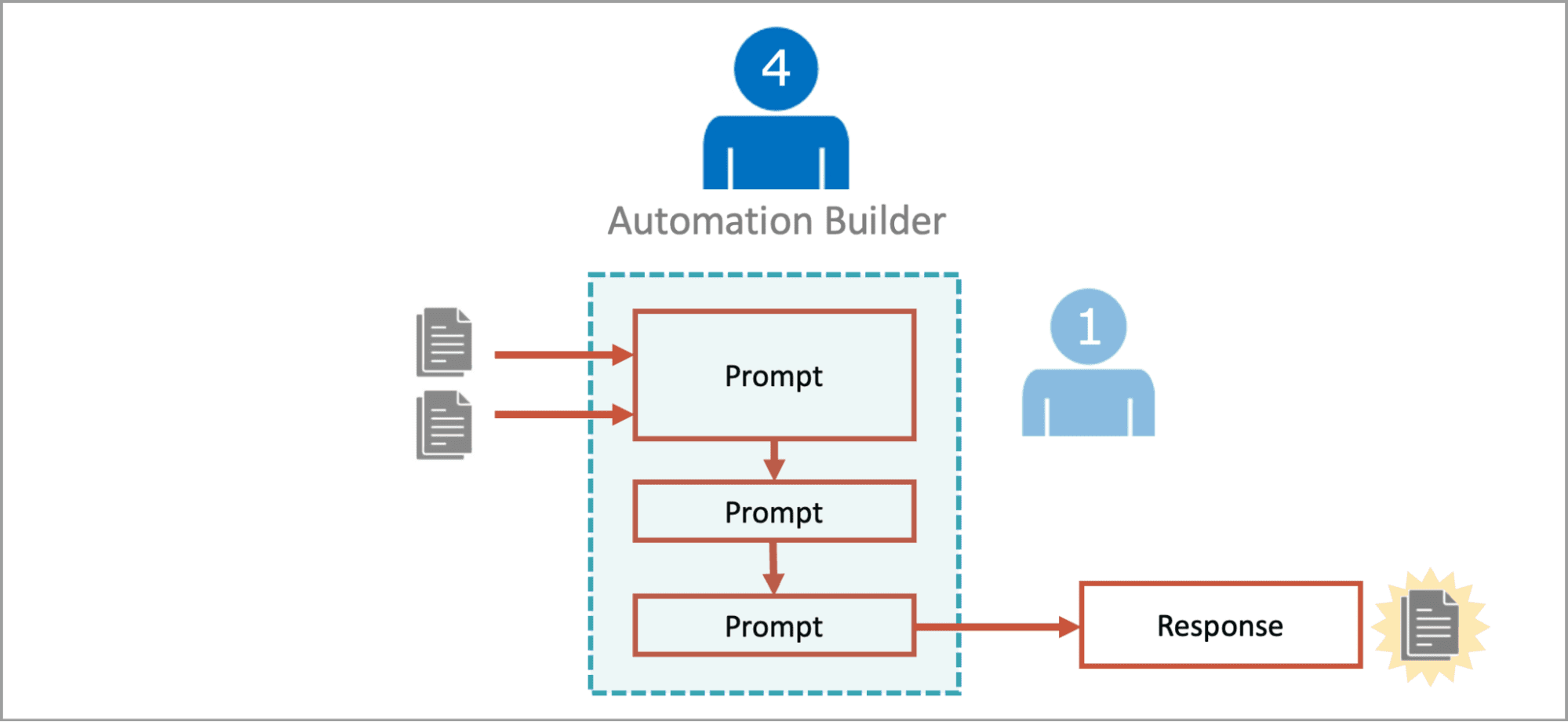The deskless workforce will benefit from digital training
There is a nationwide talent war for frontline, skilled workers, and unfortunately, too many companies are losing. Turnover among deskless workers, who account for about 80% of the workforce globally, is high, and they are notoriously difficult to train through traditional training programs. Corporate training solutions that work for someone sitting behind a desk rarely work for someone on a job site or factory floor. HR professionals cited employee engagement, retention, and recruitment as the top management challenges within the deskless workforce, according to a Society for Human Resource Management study. Unlike office workers with predictable schedules and easy access to digital tools, deskless employees are mobile and harder to reach. As a result, 79% of HR leaders cite learning and development as the biggest talent challenge for deskless teams, followed by retention and onboarding cited by 75%. Training can address each of those issues, but even when available, it’s often disconnected from actual business outcomes and lacks measurable value. Why? Because training frontline workers is fundamentally different from training office-based employees. Training and onboarding in-the-field workers is complicated and complex, so many companies are slower to invest in it. Recruit, Ramp, and Retain And yet, the frontline workforce is a business-critical system. Executives love to say, “People are our most important asset.” However, when asked what systems they use to recruit, ramp, and retain employees, most stumble, which tells you everything. The workforce isn’t always treated like the strategic system it is. To connect training to business value, we need to view the entire employee journey—recruit, ramp, retain—as an integrated pipeline. Of those three stages, ramp is the most important. It’s the anchor. Companies that invest heavily in ramping programs find it easier to recruit and are more successful at retaining. When you invest in frontline workers early, they stay longer. This is especially true for skilled and industrial workers. Studies show that the majority of employees say training programs positively affect their engagement, and 94% say training encourages them to stay at a company longer. In contrast, lack of career progression is one of the top reasons employees leave. So what does ramp look like for most frontline workers today? Most often it is job shadowing. There’s value in that, especially when mentorship is involved, but the challenge is that it doesn’t scale. Not every employee is a good trainer. As experienced workers retire, mentorship will become harder to deliver consistently, especially in industries facing labor and skills gaps. Digital Training Allows For Customization The goal, then, is to build a digital training system that can act as a mentor but can scale. Simulations have already been proven in aviation, medicine, and the military. They offer the closest thing to hands-on training and will become even more accessible as spending on technology for deskless workers increases. When digital learning is done well, it mimics great teachers by not just showing people how to do their jobs but also challenging them to understand why it’s done that way. It also provides assessments, which is critical in ramping programs. A strong system meets new workers where they are, quickly understanding their current capabilities and tailoring training accordingly. Digital training also supports personalized learning plans, delivering key lessons in short, targeted bursts that can teach what’s needed to improve job performance and support career advancement. Too often, training is treated as a one-size-fits-all solution without alignment to the business strategy. AI will bring even more customization to learning, making it more relevant. But to tie it back to business outcomes, companies must use data to track progress and impact and then align it to company goals. Retain Frontline Talent Companies that see real results are those that define success, design training programs that build the skills to get there, and actively measure how training improves operations. We’re already seeing this investment mindset emerge in places like private equity-backed roll-ups of skilled trades companies. These firms are building standardized, scalable training systems across dozens of operating companies to drive profitability. In doing so, they’re setting a model that others can follow. Winning the war for frontline talent requires a shift in thinking. Leaders need to ask themselves: Do we treat workforce development like other critical business systems? Can the knowledge gained translate to measurable business outcomes? Do we have a learning and development foundation that is connected to the business? Can our existing training system leverage the power of AI to deliver personalized, engaging training that derives even more value

There is a nationwide talent war for frontline, skilled workers, and unfortunately, too many companies are losing. Turnover among deskless workers, who account for about 80% of the workforce globally, is high, and they are notoriously difficult to train through traditional training programs. Corporate training solutions that work for someone sitting behind a desk rarely work for someone on a job site or factory floor.
HR professionals cited employee engagement, retention, and recruitment as the top management challenges within the deskless workforce, according to a Society for Human Resource Management study. Unlike office workers with predictable schedules and easy access to digital tools, deskless employees are mobile and harder to reach. As a result, 79% of HR leaders cite learning and development as the biggest talent challenge for deskless teams, followed by retention and onboarding cited by 75%.
Training can address each of those issues, but even when available, it’s often disconnected from actual business outcomes and lacks measurable value. Why? Because training frontline workers is fundamentally different from training office-based employees. Training and onboarding in-the-field workers is complicated and complex, so many companies are slower to invest in it.
Recruit, Ramp, and Retain
And yet, the frontline workforce is a business-critical system. Executives love to say, “People are our most important asset.” However, when asked what systems they use to recruit, ramp, and retain employees, most stumble, which tells you everything. The workforce isn’t always treated like the strategic system it is.
To connect training to business value, we need to view the entire employee journey—recruit, ramp, retain—as an integrated pipeline. Of those three stages, ramp is the most important. It’s the anchor. Companies that invest heavily in ramping programs find it easier to recruit and are more successful at retaining. When you invest in frontline workers early, they stay longer. This is especially true for skilled and industrial workers.
Studies show that the majority of employees say training programs positively affect their engagement, and 94% say training encourages them to stay at a company longer. In contrast, lack of career progression is one of the top reasons employees leave.
So what does ramp look like for most frontline workers today? Most often it is job shadowing. There’s value in that, especially when mentorship is involved, but the challenge is that it doesn’t scale. Not every employee is a good trainer. As experienced workers retire, mentorship will become harder to deliver consistently, especially in industries facing labor and skills gaps.
Digital Training Allows For Customization
The goal, then, is to build a digital training system that can act as a mentor but can scale. Simulations have already been proven in aviation, medicine, and the military. They offer the closest thing to hands-on training and will become even more accessible as spending on technology for deskless workers increases.
When digital learning is done well, it mimics great teachers by not just showing people how to do their jobs but also challenging them to understand why it’s done that way. It also provides assessments, which is critical in ramping programs. A strong system meets new workers where they are, quickly understanding their current capabilities and tailoring training accordingly.
Digital training also supports personalized learning plans, delivering key lessons in short, targeted bursts that can teach what’s needed to improve job performance and support career advancement. Too often, training is treated as a one-size-fits-all solution without alignment to the business strategy. AI will bring even more customization to learning, making it more relevant. But to tie it back to business outcomes, companies must use data to track progress and impact and then align it to company goals.
Retain Frontline Talent
Companies that see real results are those that define success, design training programs that build the skills to get there, and actively measure how training improves operations. We’re already seeing this investment mindset emerge in places like private equity-backed roll-ups of skilled trades companies. These firms are building standardized, scalable training systems across dozens of operating companies to drive profitability. In doing so, they’re setting a model that others can follow.
Winning the war for frontline talent requires a shift in thinking. Leaders need to ask themselves:
- Do we treat workforce development like other critical business systems?
- Can the knowledge gained translate to measurable business outcomes?
- Do we have a learning and development foundation that is connected to the business?
- Can our existing training system leverage the power of AI to deliver personalized, engaging training that derives even more value for employees and the company?
Those who can answer yes to these questions are creating a system that recruits faster, ramps better, and retains longer, all of which help transform workforce development from a cost center into a competitive advantage.
Doug Donovan is CEO and founder of Interplay Learning.































































































































































